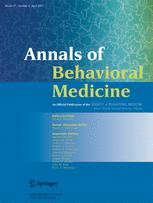 Abstract
Abstract
Background
Experimental research on pictorial warning labels for cigarettes has primarily examined immediate intentions to quit.
Purpose
Here, we present the results of a clinical trial testing the impact on smoking during and after a 28-day period of naturalistic exposure to pictorial versus text-only warnings.
Methods
Daily cigarette smokers (N = 244) at two sites in the USA were randomly assigned to receive their regular brand of cigarettes for 4 weeks with one of three warnings: (a) text-only, (b) pictures and text as proposed by FDA, or (c) the warnings proposed by FDA with additional text that elaborated on the risks of smoking. Analyses examined the effects of pictorial versus text-only warnings and self-efficacy for quitting on cigarette consumption during and 1 month after the trial as mediated by emotional and cognitive responses as well as satisfaction with smoking.
Results
Stronger emotional responses to pictorial than text-only warnings predicted reduced satisfaction with smoking during the trial and lower cigarette consumption at follow-up among the majority of smokers who continued to smoke. Consistent with the efficacy-desire model, those with moderate efficacy reported the greatest reduction in consumption at follow-up. However, a small proportion of smokers (7%) who reported 7-day abstinence at follow-up did not exhibit a significant relation with self-efficacy.
Conclusions
Pictorial warning labels proposed by FDA create unfavorable emotional reactions to smoking that predict reduced cigarette use compared to text alone, with even smokers low in self-efficacy exhibiting some reduction. Predictions that low self-efficacy smokers will respond unfavorably to warnings were not supported.


